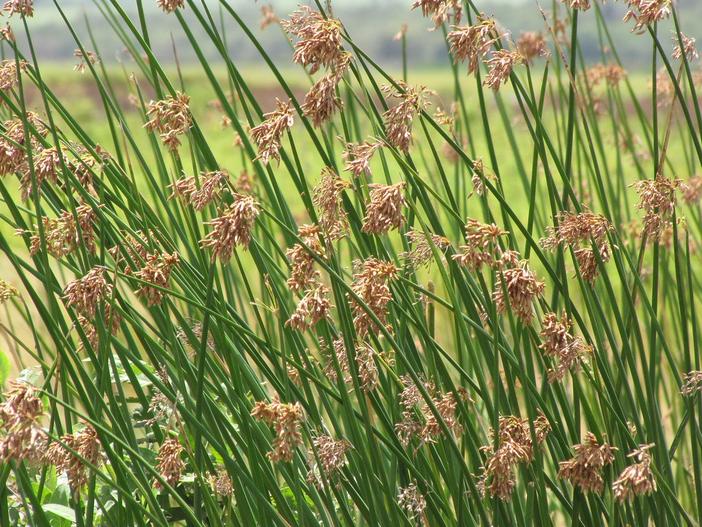California Bulrush
(Schoenoplectus californicus)
California Bulrush (Schoenoplectus californicus)
/
/

Forest and Kim Starr
CC BY 2.0
Image By:
Forest and Kim Starr
Recorded By:
Copyright:
CC BY 2.0
Copyright Notice:
Photo by: Forest and Kim Starr | License Type: CC BY 2.0 | License URL: https://creativecommons.org/licenses/by/2.0/ | Uploader: Starr Environmental | Publisher: Flickr


























Estimated Native Range
Summary
Schoenoplectus californicus, commonly known as California bulrush or southern bulrush, is a perennial herbaceous plant that thrives in wetland areas such as marshes, lake edges, and riverbanks. It is native to a broad range including the southern and western United States, Mexico, Central and South America, and has a notable presence on Easter Island and the Falkland Islands. This sedge is also naturalized in Pacific regions such as New Zealand, Hawaii, and the Cook Islands. Typically, it can reach heights of up to 10 feet (3 meters), featuring tall, thin, dark green stems with a distinctive triangular cross-section. The flowers are less conspicuous, presenting as woolly, bristly panicle inflorescences during the summer months.
California bulrush is valued for its ecological role in water filtration and providing habitat for wildlife. It is also culturally significant, as seen with the subspecies totora (S. californicus subsp. tatora), used by the Uros people of Lake Titicaca to construct floating islands. The plant’s buoyant stems have been utilized for over 3,000 years to make traditional boats like the Caballito de totora in Peru. In cultivation, it requires consistently moist or wet soil conditions and can tolerate a range of light exposures from full sun to part shade. While it is not typically prone to diseases, it can spread aggressively via rhizomes, which should be considered when planting in smaller water features or where space is limited.CC BY-SA 4.0
California bulrush is valued for its ecological role in water filtration and providing habitat for wildlife. It is also culturally significant, as seen with the subspecies totora (S. californicus subsp. tatora), used by the Uros people of Lake Titicaca to construct floating islands. The plant’s buoyant stems have been utilized for over 3,000 years to make traditional boats like the Caballito de totora in Peru. In cultivation, it requires consistently moist or wet soil conditions and can tolerate a range of light exposures from full sun to part shade. While it is not typically prone to diseases, it can spread aggressively via rhizomes, which should be considered when planting in smaller water features or where space is limited.CC BY-SA 4.0
Plant Description
- Plant Type: Grass
- Height: 4.9-10 feet
- Width: 1.6-7 feet
- Growth Rate: Moderate
- Flower Color: N/A
- Flowering Season: Spring, Summer
- Leaf Retention: Evergreen, Semi-deciduous
Growth Requirements
- Sun: Full Sun, Part Shade
- Water: High, Aquatic
- Drainage: Slow, Standing
Common Uses
Bird Garden, Erosion Control, Low Maintenance, Water Garden
Natural Habitat
Thrives in wetland areas such as marshes, lake edges, and riverbanks
Other Names
Common Names: Tule, Giant Bulrush, Southern Bulrush
Scientific Names: , Schoenoplectus californicus, Dichromena atrosanguinea ×.Desv., Elytrospermum californicum, Fimbristylis rigida, Malacochaete assimilis, Malacochaete chilensis, Malacochaete chilensis, Malacochaete oligostachya, Malacochaete riparia
GBIF Accepted Name: